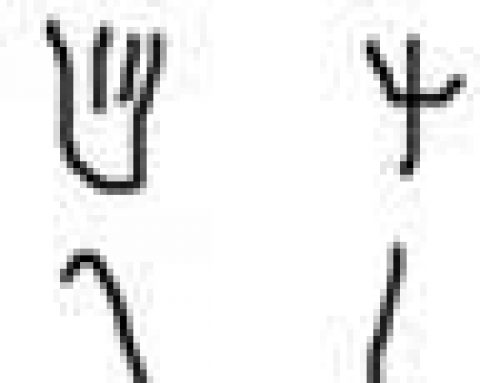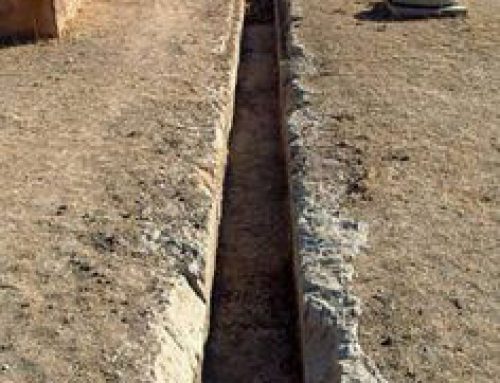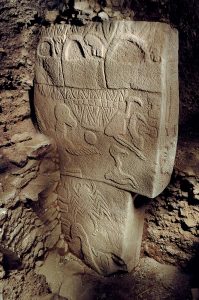
Building D, Gobekli Tepe. Southern Turkey, about 9000 BC
The earliest art known from West Asia is from about 9000 BC, soon after the end of the last Ice Age. It’s from Gobekli Tepe, in southern Turkey near the border with Syria. At Gobekli Tepe, hunter-gatherer people built a big stone temple and decorated it with carved foxes, lions, snakes, vultures, and other creatures.
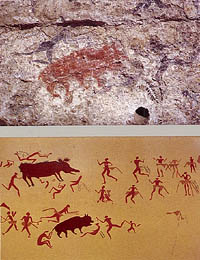
Hunters in a painting from a shrine in Catal Huyuk, about 7000 BC
Soon after that, as people began to farm for their food, there is more art found at Jericho in modern Palestine and at Catal Huyuk (CHAT-al-HOO-yook) in modern Turkey. It dates to about 8000 BC. There are wall paintings in people’s houses showing hunting scenes. Aren’t they a lot like the hunting scenes painted by the San of the Kalahari desert in South Africa?

Neolithic statue from Ain Ghazal (Jordan, about 7000 BC)
The people of Jericho and other nearby towns also made sculptures of people, about half life size, made out of plaster and tar. The one shown here, from Ain Ghazal, is now in the Louvre museum in Paris.
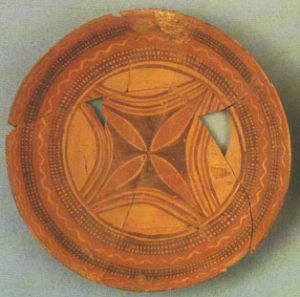
A plate from northern Mesopotamia, about 5000 BC
People in West Asia about 7000 BC also began to make clay pots. They weren’t the first to make pottery. That happened about 14,000 BC in China and Japan. But this was the first pottery in West Asia.
Mesopotamian Plate Art Project
More about the Stone Age in West Asia
Bibliography and further reading about Stone Age West Asian art:
The Art and Architecture of the Ancient Orient, by Henri Frankfort (5th edition 1997). The standard for college art history classes.

